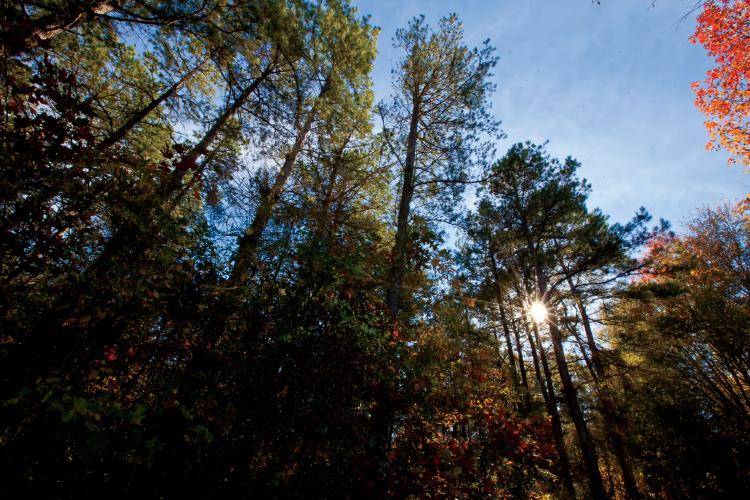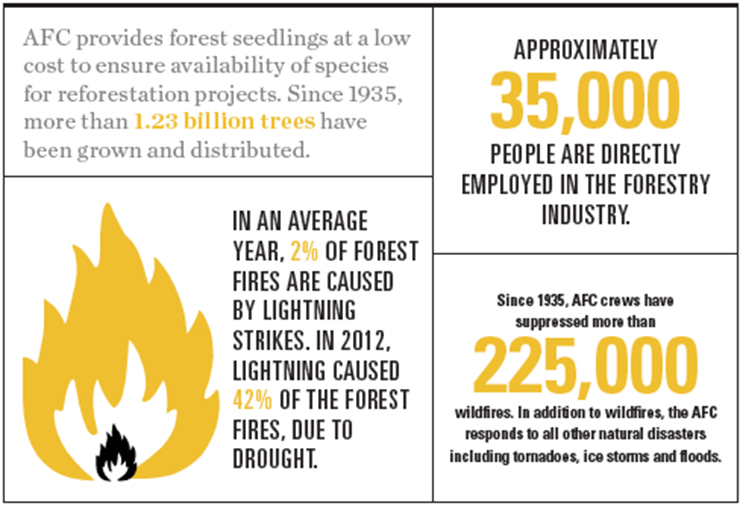Home > Arkansas > Arkansas Environment > Arkansas Forestry Commission Protects State Forests
Arkansas Forestry Commission Protects State Forests

As a county forester in Arkansas for nearly 15 years, Bryan Aday has experienced the ins and outs of just about every kind of fire imaginable.
There have been the out-of-control wildfires and the very in-control fires from prescribed burning. He has seen plenty of fires started by accident and a few by arson, and in 2012 he saw an uncommonly high number ignited by lightning strikes.
But Aday’s job is about more than just smoke and embers.
“Fires are our main objective, but we do a lot more than that,” says Aday, forester for Cleburne and White counties within District 7 of the Arkansas Forestry Commission. “In fact, if you figured it up by time, we don’t spend as much time on fires as people think we do.”

The Arkansas Forestry Commission (AFC) was established in 1931 with a primary mission to work with agencies, organizations and residents to prevent and suppress wildfires. But the AFC also monitors forest insects and disease, grows and distributes trees, and maintains an assortment of information for the growth, use and renewal of forests.
The prevention of wildfires is priority for Aday and other county foresters throughout the eight-district AFC, and they accomplish this through several methods. One is with education, whether it’s using Smokey Bear and other fire-safety programs in schools or leading sessions that show private landowners and industries how best to protect their properties from wildfires.
For example, the Arkansas FireWise program provides land developers, homeowners and industries with information to make their properties safe from wildfires.
“This has proved to be very successful,” says Joe Fox, the AFC’s State Forester since 2012. “We have more FireWise communities in Arkansas than any other state. We’re very proud of that program.”

The AFC helps private landowners become better stewards of their forests, through the Forest Stewardship program. It also works with residents in urban areas to manage trees on their property, and sells forest tree seedlings to a variety of places from its Baucum Nursery in North Little Rock.
While fires may be the leading threat to Arkansas forests, the AFC also monitors for invasive species, forest pests and other threats to the general health of trees.
To specifically prevent wildfires, county foresters and rangers will do a good bit of prescribed burning and the building of fire lanes.
“Prescribed fires are a great tool to help reduce hazardous fuel loads (such as underbrush) on public and private property,” Fox says.
Wildfire danger in Arkansas is highest in late winter and late summer, Aday says. When a fire breaks out, he and a bulldozer operator go to get it under control.
But he says the real fighters are the volunteer firemen.
“They help us out big-time. They’re the first responders, and they’re able to suppress a lot of fires that we don’t even go on.”
With the drought of 2012, foresters, rangers and volunteers throughout the state had a particularly busy year fighting wildfires. Lightning strikes, which usually make up about 2 percent of fires each year, accounted for 42 percent of Arkansas fires in 2012.
“Usually with lightning, rain will follow,” Adays says. “But these were the kind that didn’t always have rain, which was very unusual.”
Arkansas forests play a significant role in the state’s economy, with some 35,000 people directly employed in the timber industry, according to Fox. Arkansas is known as one of the largest paper-producing states in the country, and there are many other uses from timber grown here.



